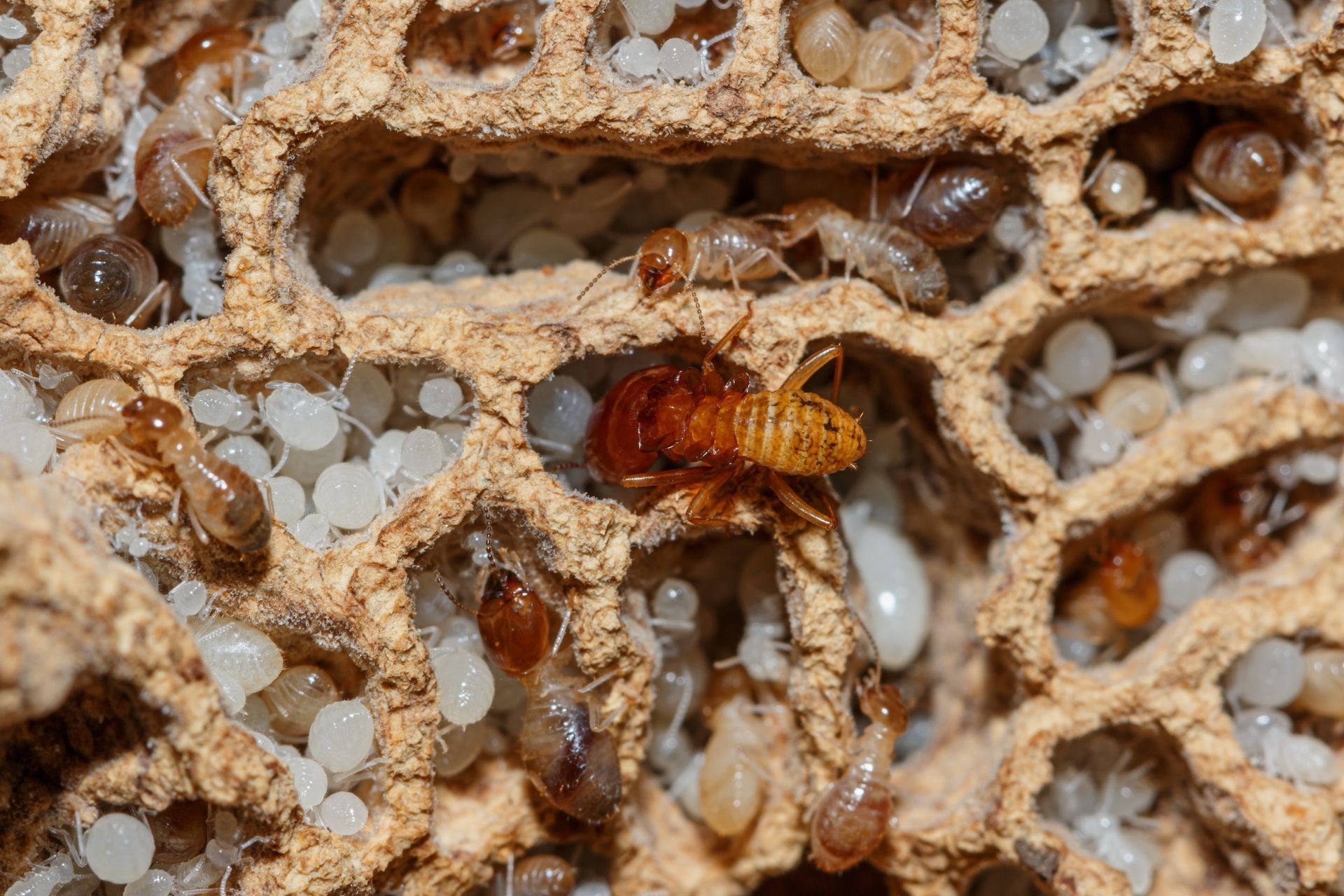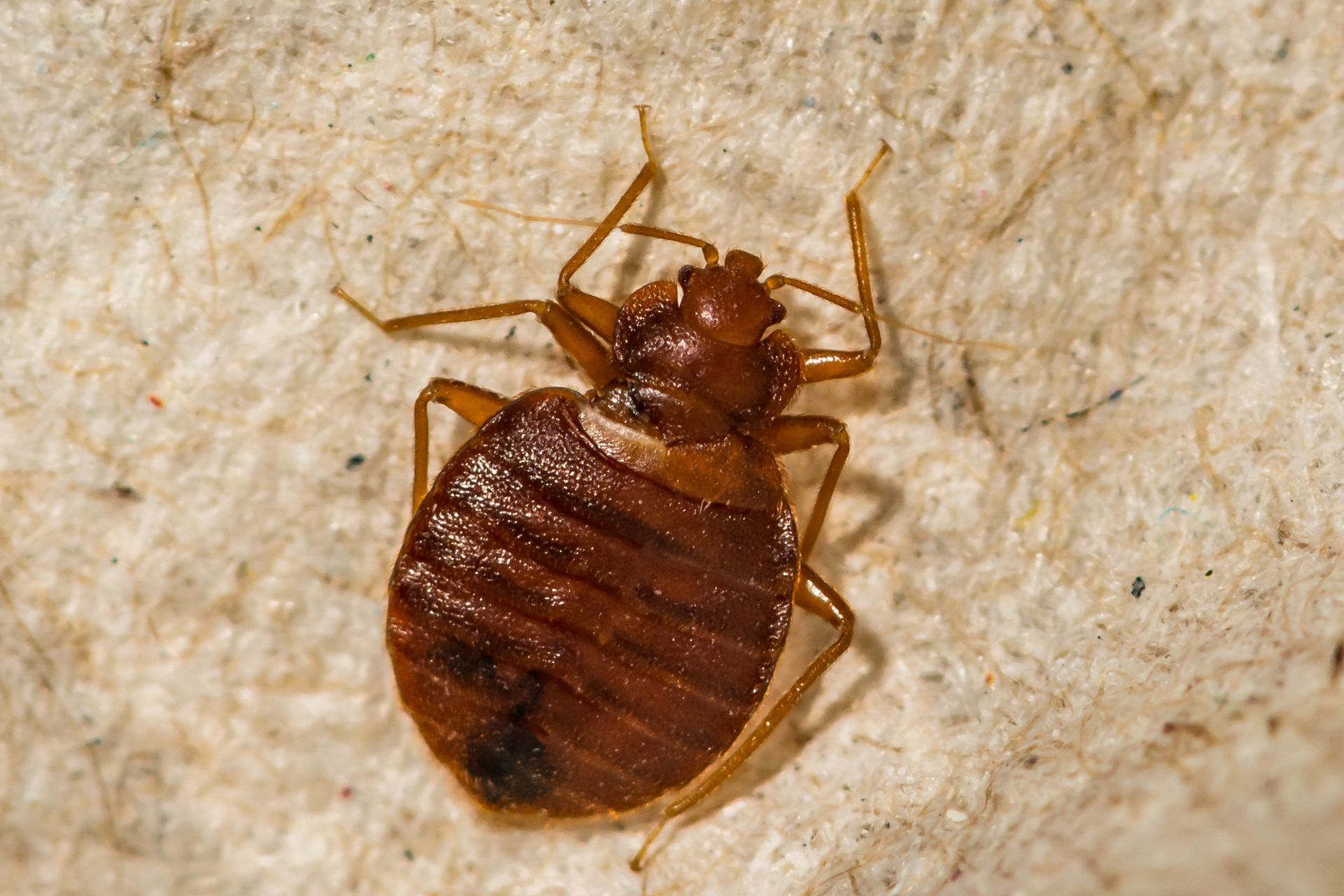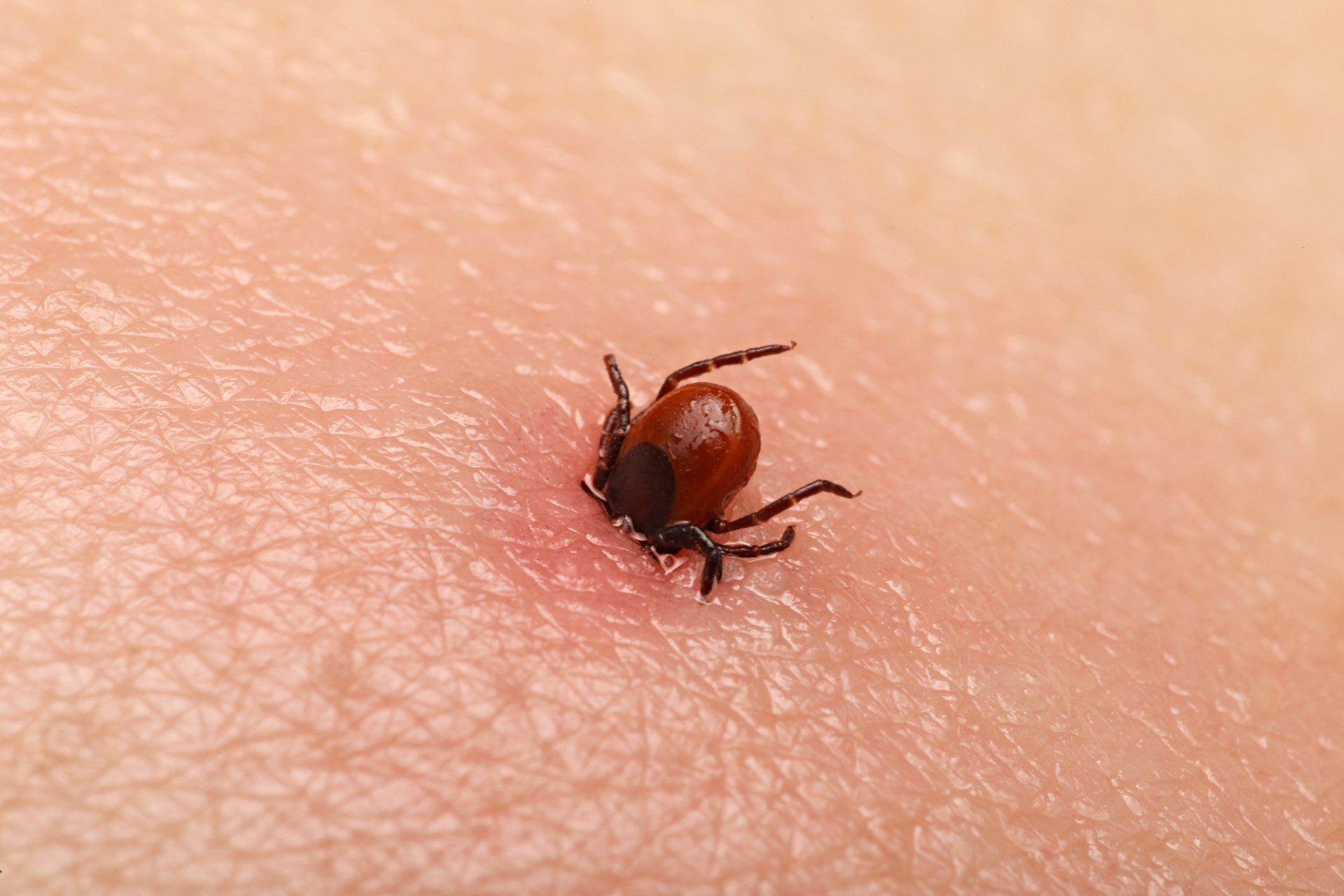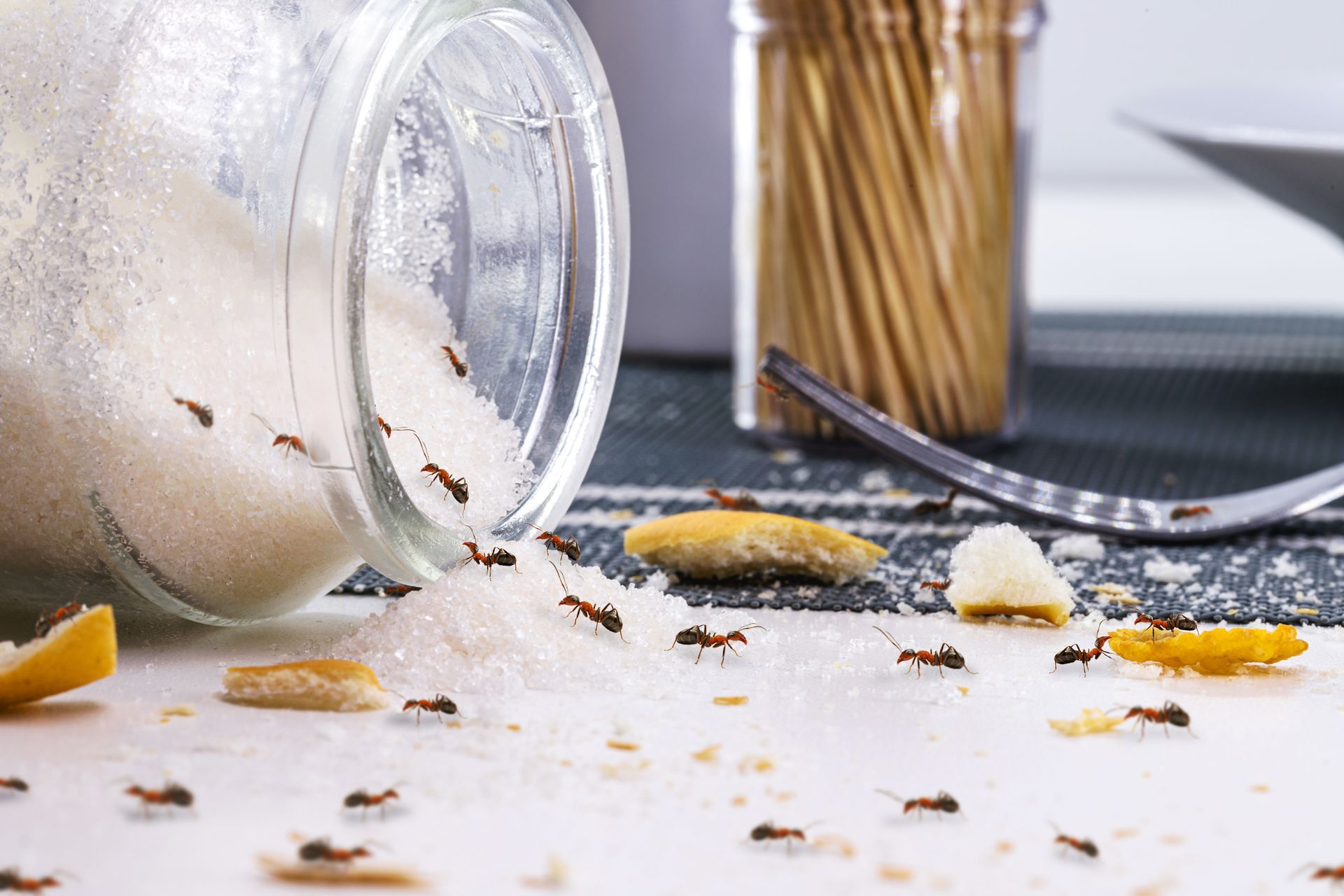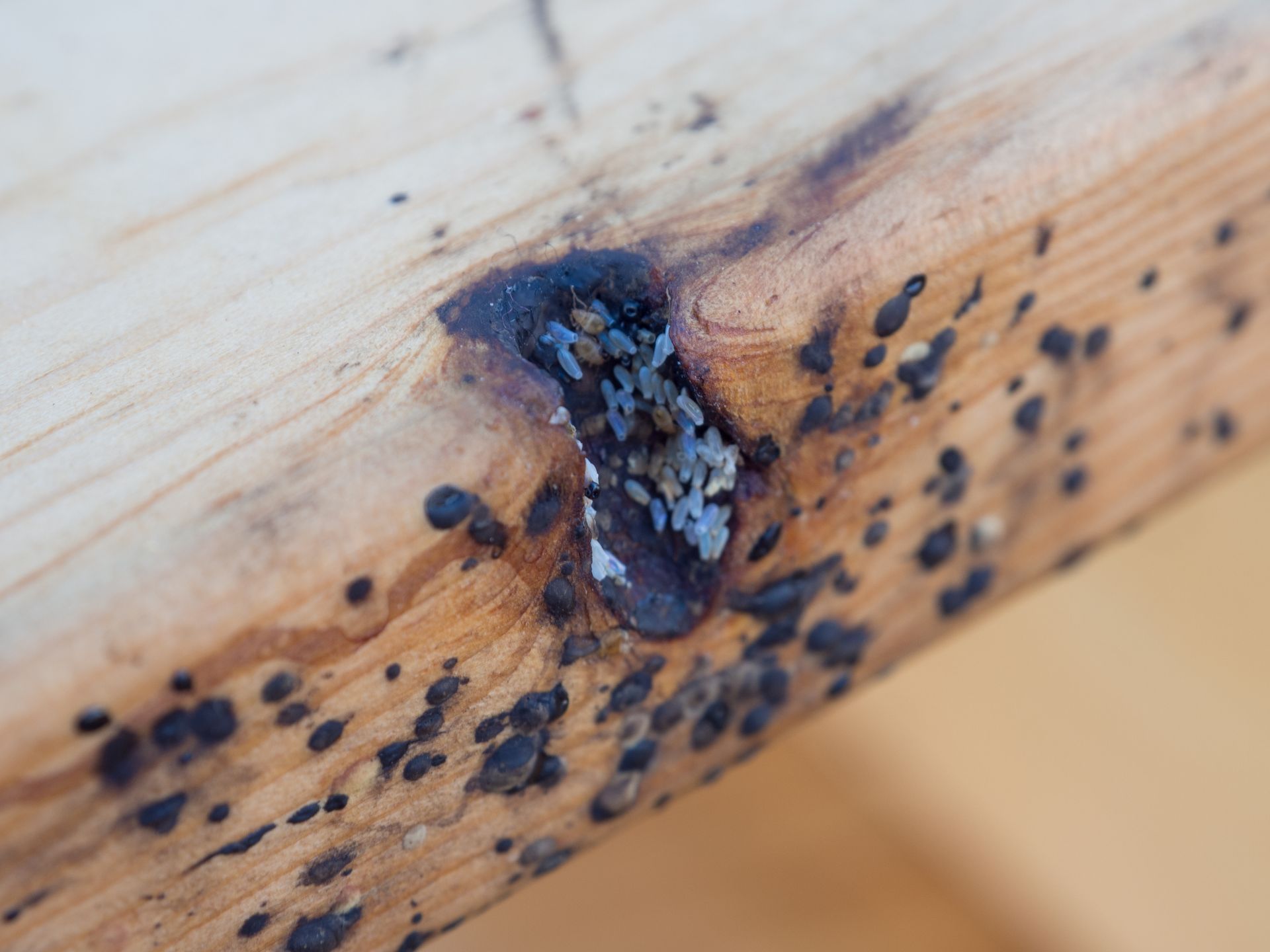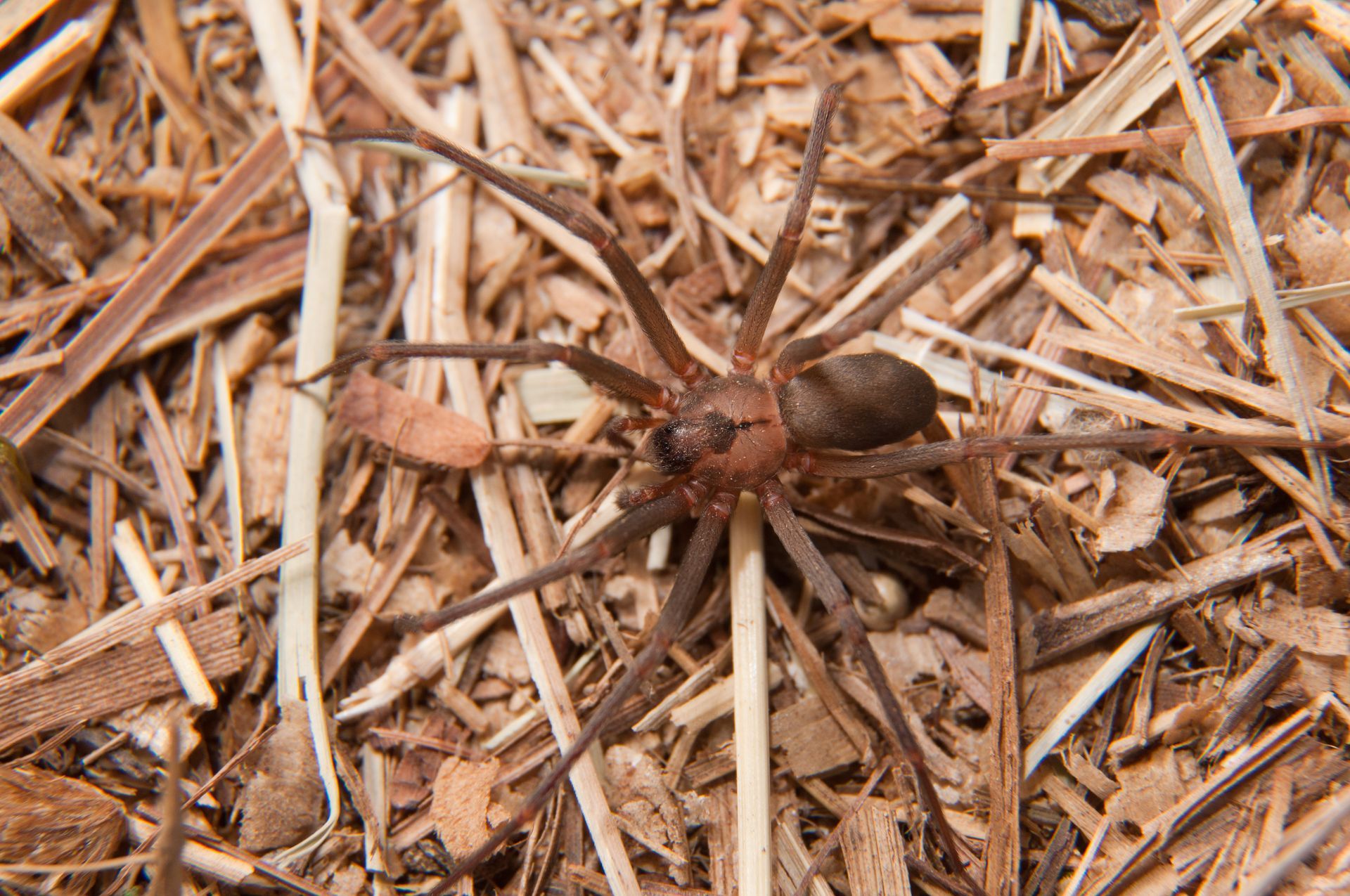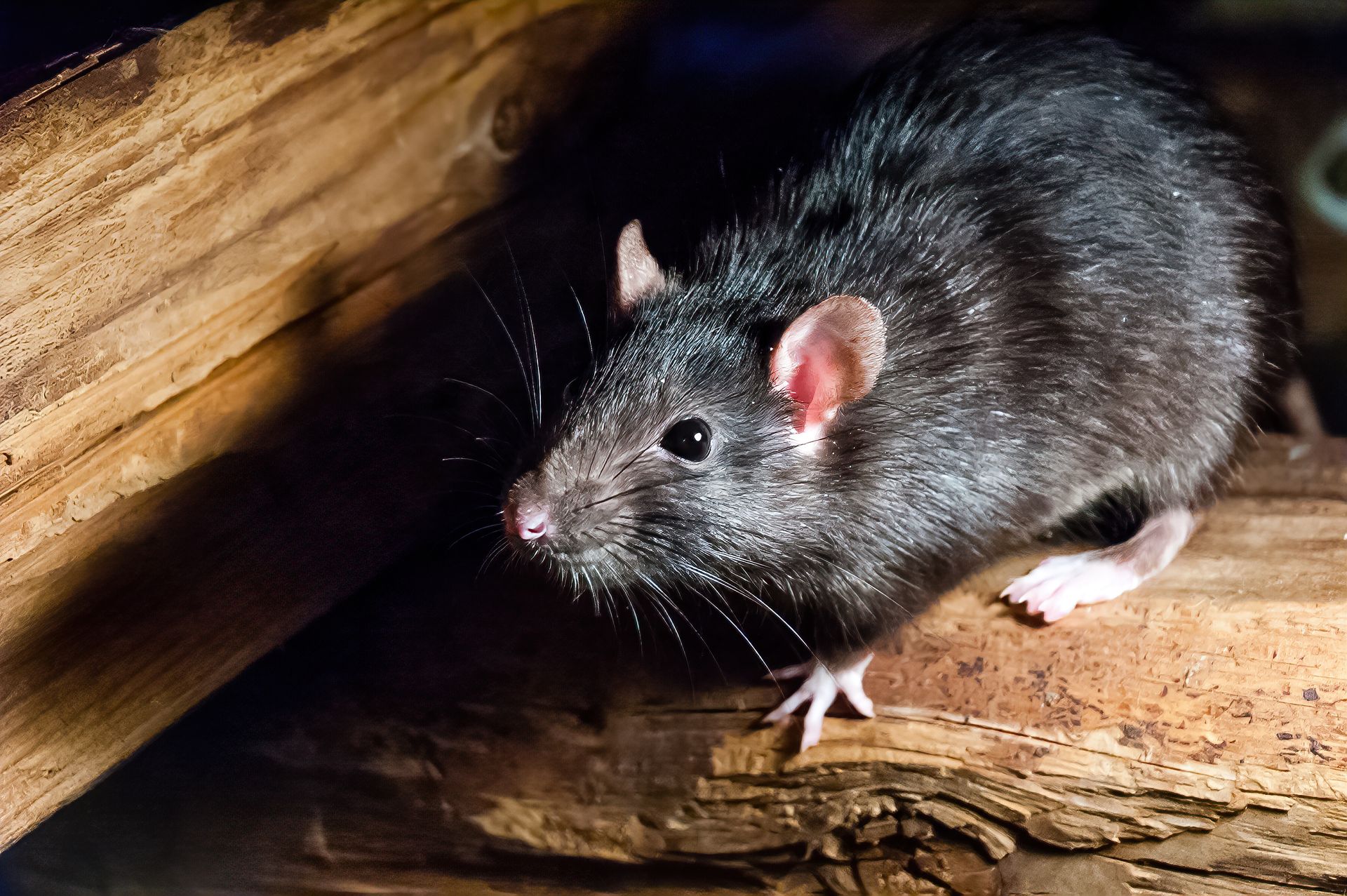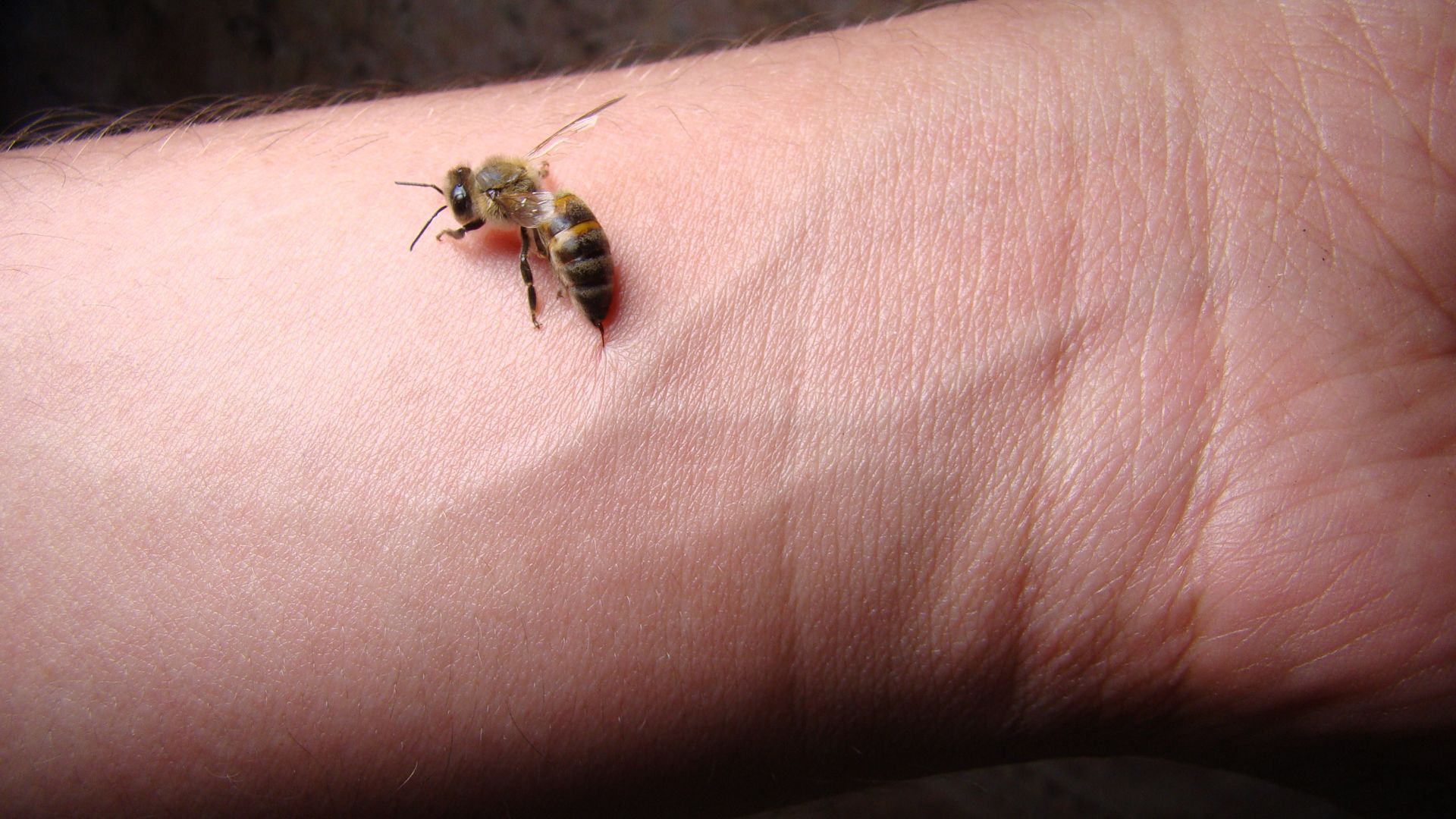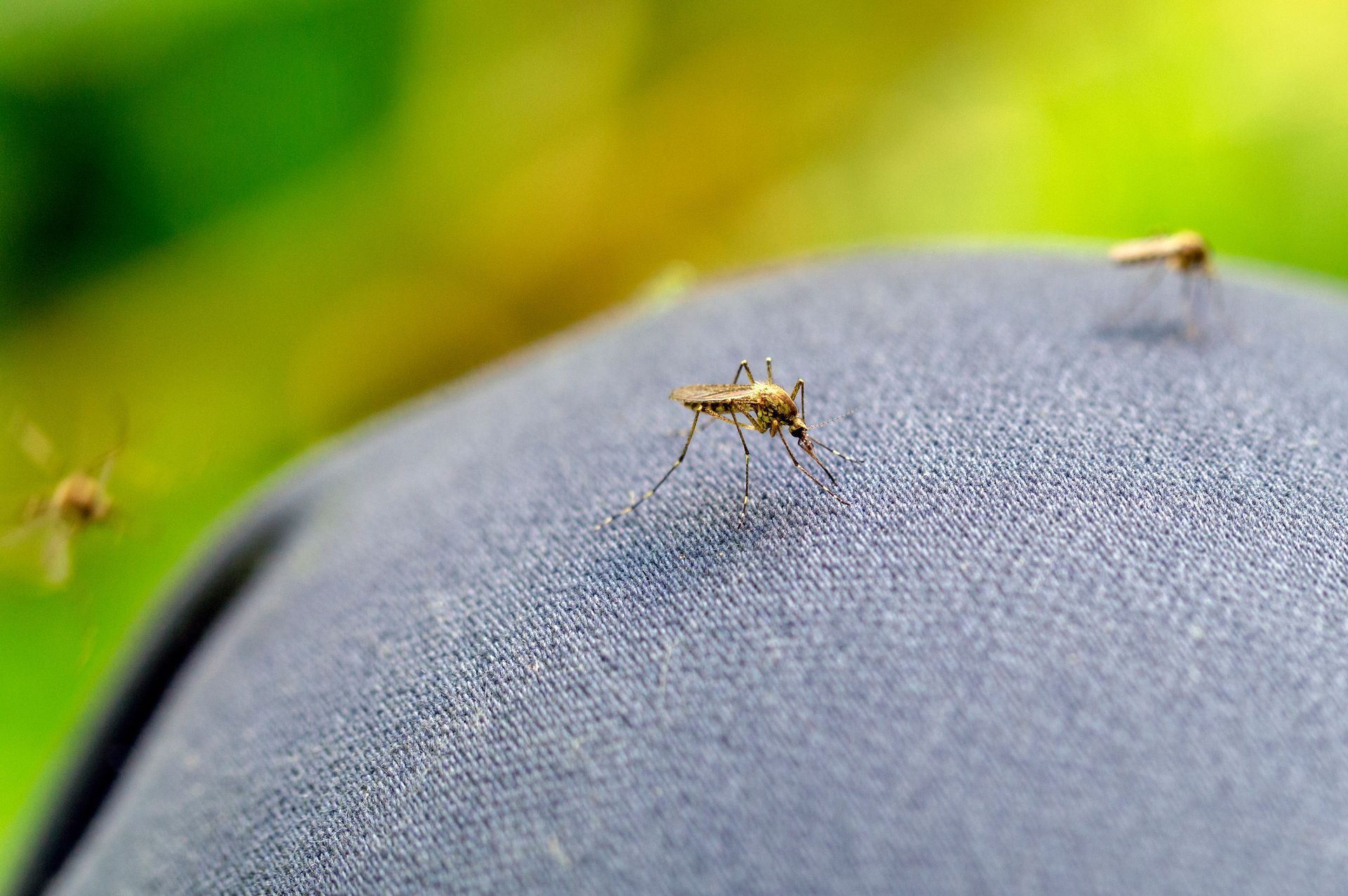Termite Queen
Termites are social creatures with their own caste system and termite queens are the matriarch. Every single termite inside of a colony has hatched from one of her eggs. Termite queens are easily identified by an engorged body that is much larger than every other termite in the colony. This body pulsates as it produces roughly 1000 eggs per day at optimal capacity. They are incapable of moving so they require the support and nourishment provided by worker termites. The queens also play a large role in segmenting adolescent nymphs into the caste they will develop into. While finding the queen is rare, it is important that termites are effectively treated to prevent further damage to your home.
What Does a Termite Queen Look Like?
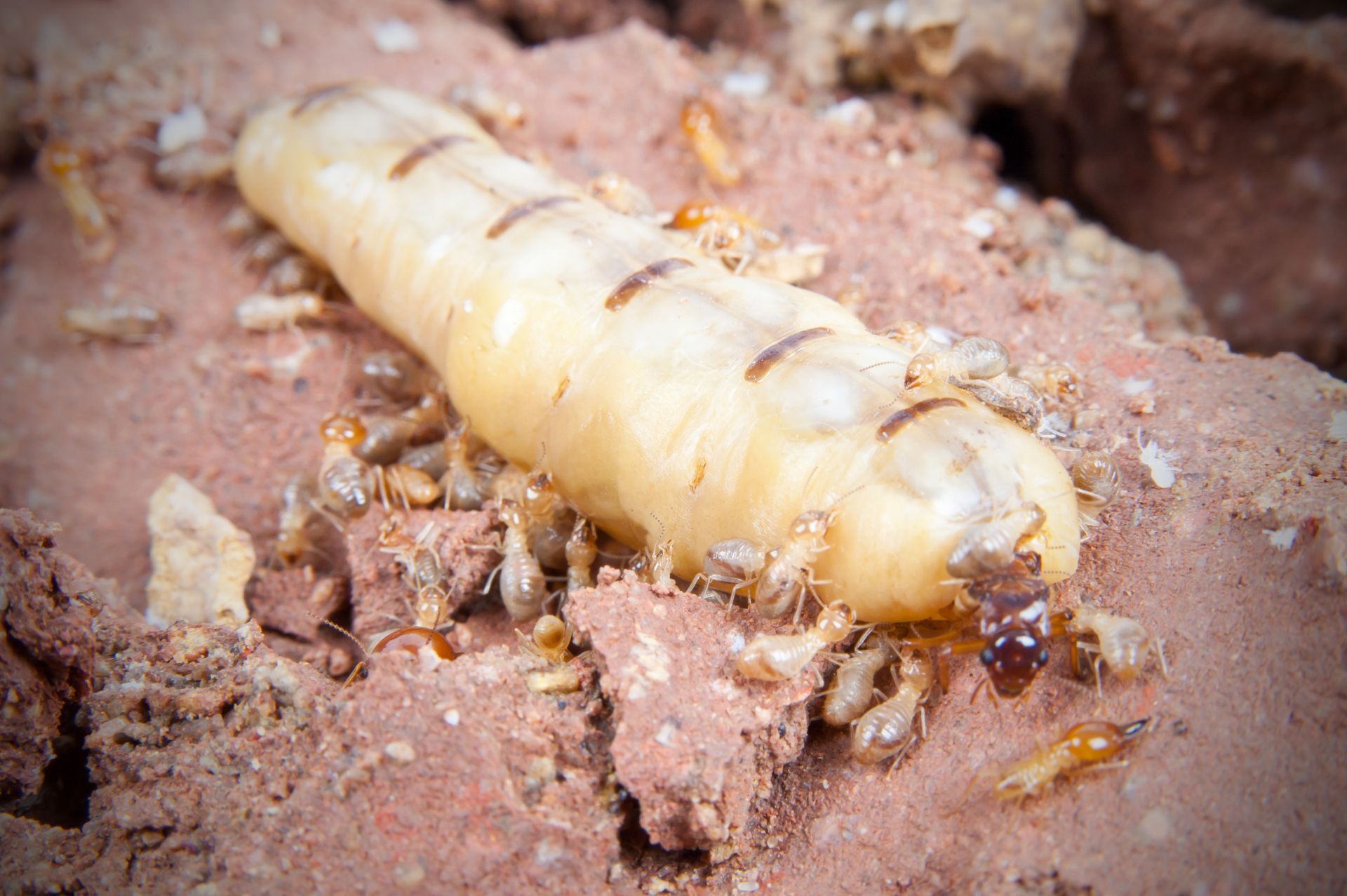
Originally a primary reproductive emerges from a group of swarmers to take the role as queen of a new termite colony. At this time her body will resemble a swarmers with wings and a normal size body. After she is fertilized by the king, the body starts to change to accommodate the new duties of producing eggs to support the colony. The sheer number of eggs that need to be produced causes the body to expand until the exoskeleton is so thin it turns translucent. At the peak of egg production, the queen termite could be the size of a human finger. The color of the queen is lighter for subterranean termites who never emerge from their underground breeding chamber while drywood queens are more yellow or brown.
How Big is the Termite Queen?
A termite queen’s size can grow to be up to 6 inches long which is a hundred times bigger than a typical termite. While the body engorges, the head and legs remain the same size. These legs do not provide enough strength to move the body of the queen, so she is essentially trapped within her breeding chambers for the rest of her life.
Role of the Queen Termite
The termite queen plays the most critical role in the entire colony. She is responsible for producing all of the eggs that a colony will need to support itself. These eggs are carried out of the royal chambers by worker termites who are tasked with cleaning and maintaining the eggs until they hatch.
Before this happens, a queen will emerge from a group of swarmers when a new colony site is chosen. Once she is fertilized by the king, her body starts to change. Initially a termite queen’s eggs production won’t be at full capacity but after a short period of growing into her fully formed body, she will start producing several hundred to a thousand eggs a day depending on species.
The other critical role the termite queen plays is colony communication. She controls the pheromones that trigger certain development cues that determine the caste selection of termite nymphs. She also secretes a substance that releases pheromones that workers consume.
Primary Reproductives
Primary reproductive include the queen and king termites and the alates. This classification includes all fertile termites that could potentially create a new or satellite colony. The alates will swarm to a new location where only one of them will emerge as the queen. That being said, it is important that they all have the capability to become the queen because only a small percentage of alates survive the nuptial flight to a new colony.
Secondary Reproductives
The queen is responsible for controlling the outcome of the caste selection for mature termites. Depending on the needs of the colony, a secondary reproductive could be allowed to develop to help expand the colony. This would introduce a new egg laying queen that would increase the number of workers in the colony. The queen will determine if this kind of support is needed and adjust the pheromones she releases to allow or stop the development of a secondary reproductive queen.
Termite Queen Lifespan
Depending on the species, a termite queen can live on average between 10 – 25 years with some species living as old as 50 years. That said, termites should be caught much sooner than that because most termites can completely destroy a house in a few years if not treated in time.
The pheromone that the queen produces that prevents the development of another queen fades when a queen dies which indicates to a colony that a new queen is needed. This will trigger a secondary reproductive to mature into the queen’s replacement.
How Many Eggs Do Termite Queens Lay?
During optimal egg laying condition, termite queens can lay several thousands of eggs in one day. With year-round egg laying, that can result in over 9 million eggs in a termite’s life span. This is incredible when you consider that during that timeframe new satellite colonies could emerge producing the same amount of termite hatchlings.
How to Find Termite Queens?
Termite queens are found deep within the colony, usually protected by thick walls or deep underground. Since they can’t move, getting a termite queen out of her breeding chambers is unlikely which means that a termite colony has to be destroyed to reach the queen termite. This is irrelevant though since treatment options typically don’t require the location of the termite queen to exterminate the colony.
How to Get Rid of a Termite Queen?
Getting rid of the termite queen isn’t really a priority when treating for termites because they will all eventually be infected as termiticides make their way inside a colony. Fumigation, baiting, and soil treatments are all effective at causing the colony to collapse. If the colony collapses, there won’t be any workers to help keep the queen and eggs alive. EcoGuard Pest Management can help inspect and properly treat for termites.
What Happens When a Termite Queen Dies?
If a termite queen dies, the role will eventually be filled by a secondary reproductive who will start producing eggs. This is because the queen will release a pheromone that stifles the development of secondary reproductive into active queens. Once the queen dies and that pheromone stops, another queen will emerge from the nymphs to perpetuate a healthy termite colony.
Termite Queen FAQs
-
What is a termite queen?
The termite queen is the egg producing matriarch of a termite colony. Every termite in a colony has come from one of her eggs. She plays a large role in the development of the colony and in the communication and delegation of tasks within the colony.
-
Can queen termites move?
Termite queens’ bodies are so large that their legs are not strong enough to move without the help of worker termites. It isn’t until the termite queen is fully developed that she becomes immobile.
-
Do queen termites bite?
Queen termites can technically bite but they do not leave the safety of their breeding chambers. The termites that will bite to protect the queen are the soldier termites.
-
Where do you find queen termites?
Termite queens are found deep within the colony in the breeding chambers. This part of the nest will be connected by tunnels to the chambers used to house and hatch the eggs.
Request A Free Estimate
We will get back to you as soon as possible
Please try again later
Immediate Service Available
Services
Customer Care
Legal
Working hours
- Mon - Sun
- -
All Rights Reserved | EcoGuard Pest Management | All Phone Calls Recorded | By Using Website You Agree To Terms Of Use



